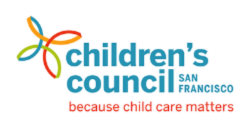Topics
Choosing Child CareFamilies' RightsFamily & Community EngagementFinancial AssistanceLicensing & SafetyParenting & Child DevelopmentProvider ResourcesResource & ReferralSpecial NeedsStudies show that the best time to learn a new language is between birth and age 7. That makes early childhood an ideal time to learn a foreign language. Language immersion classes take advantage of this time by immersing students in multilingual environments.
There are two types of language immersion classes.
In dual language classes, students are taught two languages at once. In California, they are taught English and a “partner” language. The goal is for students to learn everything they would in a traditional school, plus a foreign language. This is similar to bilingual education. But bilingual classrooms oftentimes have many non-native English speakers.
In two-way immersion classes, half the students are native English speakers and half are native speakers of the partner language. Both groups take turns serving as model and learner. The goal is the same as dual language classes. Students learn everything they would in a traditional school, plus a foreign language.
These classes may be 50/50 or 90/10.
In 50/50 classes, students spend half of the time learning in their native language and the other half learning in the partner language.
In 90/10 classes, students spend 90% of the time learning the non-native language. This is typically done in the first two years of the program. Then, the foreign language course work decreases until there is a 50/50 balance between languages.
The Benefits of Language Immersion Programs
Some parents express concern that a bilingual education could negatively affect their child’s ability to speak their native language. But studies show that this is not the case.
In fact, there are many benefits to language immersion classes. This includes:
- Learning and keeping a second language. Graduates of language immersion programs are more likely to speak a second language. This is compared to those who take traditional language classes.
- Building brain matter and improving cognitive function. Some studies show that bilingual individuals have more grey and white brain matter. This helps with increased cognitive function. It also keeps the brain from deteriorating in old age.
- Improving academic achievement. Students in dual-language and two-way language programs have better reading and math skills than their single-language peers.
- Greater opportunity. The more languages a person learns, the more opportunities they have in life. This includes opportunities for employment and travel.
Sources:
http://www.cal.org/twi/glossary.htm
https://www.knowablemagazine.org/article/mind/2018/how-second-language-can-boost-brain
https://www.tandfonline.com/doi/full/10.1080/15235882.2013.818075?src=recsys
Was this article helpful?
Similar Resources
Families’ Rights in Choosing Child Care
In California, parents have the right to make the best child care choices for their family. Parents have many options:...Child Care Resource and Referral Agencies (CCR&Rs)
What is a CCR&R? Child care resource and referral agencies (CCR&Rs) serve families, child care providers and the...Licensing and Monitoring for Child Care Facilities in California
Community Care Licensing Information The Department of Social Services, Community Care Licensing (CCL) licenses and moni...Log into your account
Don't have an account? Sign up
Sign up to save your own provider lists
Already have an account? Log in
Create an account with Email Address | Phone Number

